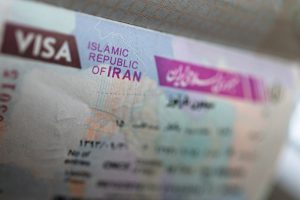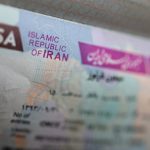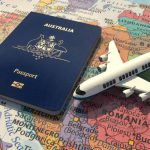Ali Qapu Palace, located in the heart of Isfahan, is one of the city’s most iconic landmarks.Known for its historical significance and stunning architecture, the palace isa must-visit destination for anyone exploring the rich cultural heritage of Iran. The Ali Qapu Palace history dates back to the Safavid era, showcasing the grandeur and artistic achievements of the time. A standout feature of the palace is the Ali Qapu Palace music hall, renowned for its unique acoustic design and intricate stucco work. Visitors can also explore various Ali Qapu Palace photos online to admire its beauty before visiting.
If you’re planning a trip to this majestic palace, this article will guide you on how to get to Ali Qapu Palace Isfahan, the best times to visit, and nearby options for eating and staying Whether you’re looking for a historical journey, a cultural experience, or simply a place to relax, Ali Qapu Palace offers something for everyone.
History of Ali Qapu Palace
The name Ali Qapu consists of a Persian and an Azerbaijani word. In English “Ālī” means “imperial” or “great”, and “Qāpū” means ”gate”.
The palace is located directly across the square from the Sheikh Lotfollah Mosque, on the western side of Isfahan’s main square, the Maydan-i Shah, also known as Naqsh-i Jahan (“Half the World”) and now called Maydan-i Imam.

It was originally constructed by a decree of Shah Abbas I in the early seventeenth century as a vast portal entrance to the Safavid palaces. These palaces stretched from the Naqsh-e Jahan Square to the Chahar Baq Boulevard.
The building serves as a monumental gatehouse connecting the public maydan (square) to the semi-private dawlat-khanah or royal precinct, which includes palaces, storehouses, and government offices.
Over time, it grew to accommodate other courtly functions. For instance, a great monarch used to entertain foreign ambassadors and noble visitors. The Iranian New Year, called Nowruz, was celebrated here for the first time by Shah Abbas in 1006 AH / 1597 C.
Ali Qapu Architecture
Ali Qapu palace Isfahan is filled with naturalistic wall paintings created by Reza Abbasi, the court painter of Shah Abbas I, and his pupils, featuring elements such as birds, flowers, and
animals.
Unfortunately, during times of social anarchy, most of the highly ornamented doors and windows of the palace have been pillaged, except for one window on the third floor that has escaped the ravages of time.
During the reign of Shah Sultan Hussein, the last Safavid ruler, Ali Qapu, was subjected to repairing and restoring substantially. However, during the short reign of invading Afghans, it was once again facing the threat of destruction.
One of the structural changes to the palace includes replacing the Safavid cornices and floral tiles above the portal by tiles bearing inscriptions during the reign of Nasir ol Din Shah e Qajar (1848–96).
Ali Qapu palace Isfahan is 48 meters (125 feet) high and has a rectangular plan with an area of 1800 square meters (5905 feet).
It also has 6 floors, which each are accessible by a difficult spiral staircase. Shah Abbas II contributed to the magnificent hall on the third floor of Ali Qapu, which features 18 mirrored columns and a beautifully painted ceiling.
The chancellery was on the first floor, while the sixth floor, popularly known as the Ali Qapu Palace Music Hall, hosted royal receptions, banquets, and featured large rooms with intricate stucco decorvessels and cups. Deep circular niches in the walls of the Ali Qapu Palace
Music Hall served both aesthetic and acoustic purposes.
On the fifth floor, the famous “peacock throne”, one of the most notable features of the Ali Qapu, is located. Made of solid gold, this elaborate throne was embellished with priceless gemstones and
detailed carvings. Unfortunately, only a replica of the original throne survives today after it was looted during the Afghan invasion of Iran in the early 18th century.
Currently, Ali Qapo Palace Isfahan is regarded as a symbol of Iran’s Islamic heritage and the best example of Safavid architecture. It is the main tourist spot of Isfahan and one of the UNESCO’s World Heritage Site, due to its cultural and historical importance.
If you’re also excited to visit this beautiful city and join us on our next trip, click now!

How to go to Ali Qapu Palace?
Since Ali Qapu Palace is located in the Naqsh-e Jahan Square and it is very centre of Isfahan, it can be accessed from different parts of the city.
Sepah St. and Hafez St. are the main entrances to the square. Ostandari Street is parallel to the square and passages such as the Posht Matbakh Passage and its alleys lead to the square.
Please keep in mind that the square is within the scope of
odd-even traffic zones, which is enforced from 8 AM to 1 PM and from 4 PM to 9 PM.
The palace is surrounded by several other notable historical landmarks, including Shah Historical Bath, Hasht Behesht Palace, Tohid Khaneh, and Chehel Sotoon Palace.
Whitin a 29-minute walking distance from the square, you will reach the Si-o-Se-Pol.
For those who enjoy road trips and independent travel, Iran Car Rental options provide unmatched freedom while discovering Iran’s historical cities.
Cost and Suggested Visit Time for Ali Qapu Palace
Aali Qapu palace entrance fee for non-Iranian tourists is 2,500,000 Iranian Rials, or around USD 4.
The best time to visit Ali Qapu Palace Isfahan, Iran, is
during spring (April-June) and autumn (September-November) for mild and pleasant weather. Summer (June-August) can be hot, while winter (December-February) is cold with possible rain or snow but offers a quieter experience.
Opening hours are 9 am to 6 pm in spring and summer, and 9 am to 4 pm in autumn and winter.
The palace is closed on specific religious holidays including Taswa and Ashura, the death of the Prophet (PBUH), the martyrdom of Hazrat Ali (AS), the martyrdom of Imam Jafar Sadiq (AS), and the death of Imam Khomeini (RA).
However, for the most recent information on the Ali Qapu Palace entrance fee, current opening hours, and potential closures, it is highly recommended to check out the official websites, tourist information
centres, or local authorities.
Where to Eat near Ali Qapu Palace
There are many restaurants and cafés with diverse menus close to Ali Qapu Palace Isfahan. Everything You Want, from traditional cuisine to international dishes, these Restaurants offer:
• Roozegar
• Radio takeaway cafe
• Haj Esmail Cheloe
• Cheese Lab
• Meydoon Cafe
• Traditional Banquet Hall
• Messo Qali Cafe
• Namakdan Mansion
• Miras Cafe Gallery
• Naghshe Jahan Traditional Restaurant
• Azadegan Cafe
• Peace coffee&tea
• Cafe Narvan
• Irooni Cafe
• Keryas cafe & restaurant
• Chilla Cafe
• Bastani
• Gozar Sandwich
• 89 Espresso Bar
• Bagh Homayoun
• Hamdamo Saltaneh
• Gas Coffee
• Lajevard Cafe
• Sogoli
• Sonati cafe
• Coffee Left
• Cafe 404
• Dastan Caffe
• Ghasr Monshi Restaurant
• Doran Food
Explore affordable travel options with our Iran Budget Tours and discover the beauty of Iran
Where to Stay near Ali Qapu Palace
There are also various hotels and resorts near the Ali Qapu Palace available. It is recommended to check the hotel’s website for more information on prices and services.
• Keryas Hotel
• Hasht Behesht Apart. Hotel
• Ghasr Monshi Hotel
• Shahsavaran Mansion Boutique Hotel
• Setareh Hotel
• Abbasi Hotel
• Piroozy Hotel
• Yakhchal House
• Honar Boutique Hotel
• Sarhang Palace Hotel
• Safir Hotel
• Parsian Aliqapu Hotel
• Dibai House
• Esfahan Tourist Hotel
• Iravani’s Historic House
• Totia Hotel
• Part Hotel
• Attar Hotel
• Parsian Kowsar Hotel
• Malek Hotel
• Avat Hotel
• Khajoo hotel
• Isfahan Azadi Hotel
• Hotel Ebne-Sina
• Viana Hotel
• Qajar House
• Avin Hotel
• Hotel Saraye Ordibehesht
• Aseman Hotel Isfahan
• Avat Hotel
Final Word
Ali Qapu Palace is a must-see historical and architectural gem in Isfahan, offering a glimpse into the grandeur of the Safavid era. From the unique Ali Qapu Palace music hall to the stunning views and intricate design, it stands as a symbol of Persian culture and art. Whether you’re interested in the Ali Qapu Palace history, capturing its beauty through Ali Qapu Palace photos, or simply exploring the palace and its surroundings, there’s much to discover. For an unforgettable visit, be sure to check the best ways to get to Ali Qapu Palace Isfahan, plan your visit, and enjoy the variety of dining and accommodation options nearby.
FAQ about ali qapu palace
when was the ali qapu palace built?
It was originally constructed by a decree of Shah Abbas I in the early seventeenth century as a vast portal entrance to the Safavid palaces
What makes the ali qapu palace unique?
The Ali Qapu Palace music hall is an extraordinary room designed with intricate stucco work that enhances acoustics, making it a masterpiece of sound engineering.


















